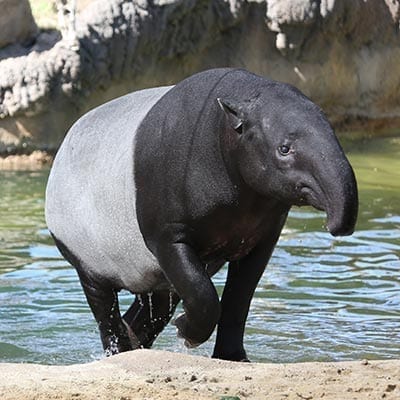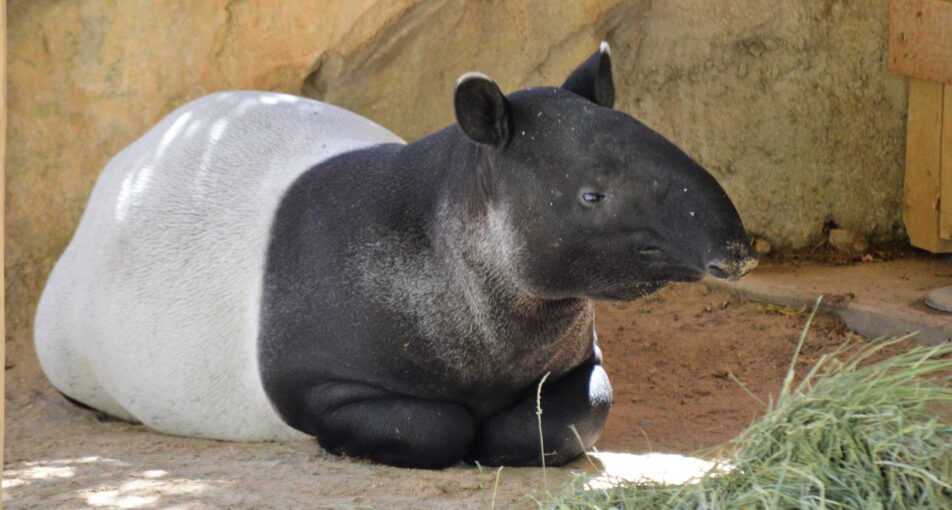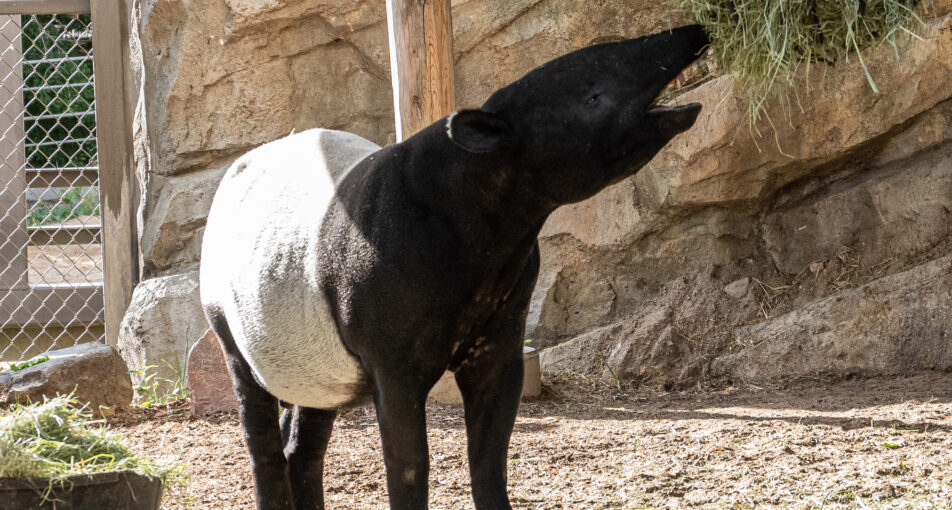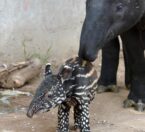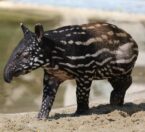Malayan tapirs are sometimes called “Oreo” tapirs because of their distinctive black and white color pattern resembles an Oreo cookie. The black on the front and back with white or gray in the middle is a form of camouflage that breaks up the tapir’s outline in the shadows of the forest. The stripes and spots on the vulnerable babies help them blend into the dappled sunlight and leaf shadows of the forest and protects them from predators.
Classification
| CLASS: | Mammalia |
| ORDER: | Perissodactyla |
| FAMILY: | Tapiridae |
| GENUS: | Tapirus |
| SPECIES: | indicus |
Habitat & Range
Tropical lowland swamp, montane and hill forests, prefers dense, primary forests.
The tapir ranges through Myanmar (Burma) and Thailand south to Malaysia and Sumatra.
Location


Adaptations
- Prehensile Snout
- The tapir’s upper lip and nose are elongated to form a distinctive prehensile snout that is similar to a stubby elephant’s trunk. This flexible extended nose is used for plucking leaves and shoots from trees as well as sniffing their way along forest trails. They have an excellent sense of smell and rely on scents for communication. Urine spraying is used to mark well-used pathways between feeding areas and water sources.
- Barrel-Shaped Body
- Tapirs have a thick heavy barrel-shaped body ideal for crashing through dense forest vegetation. When frightened or threatened, tapirs can run quickly. Despite their large size they can climb steep slopes on the banks of rivers. They are excellent swimmers and spend a lot of time in the water.
- Black White Black
- Malayan tapirs are sometimes called “Oreo” tapirs because of their distinctive black and white color pattern resembles an Oreo cookie. The black on the front and back with white or gray in the middle is a form of camouflage that breaks up the tapir’s outline in the shadows of the forest. The stripes and spots on the vulnerable babies help them blend into the dappled sunlight and leaf shadows of the forest and protects them from predators.
Physical Description
- Malayan tapirs are six to eight feet (1.8-2.4 m) long.
- They weigh 550-704 pounds (250-320 kg); females are larger than males.
- They stand three to three and a half feet (90-107 cm) tall.
- They have a distinctive color pattern – the front and back parts are black and the midsection is white or gray.
- Their nose and upper lip are extended to form a short prehensile snout.
- They have a large barrel-shaped body.
Diet
What Does It Eat?
In the wild:
As a vegetarian, non-ruminant the tapir east tender leaves and shoots, aquatic plants, buds, soft twigs and fruits of low-growing shrubs.
At the zoo:
Grain, alfalfa, apples, bananas, carrots, sweet potatoes, monkey chow.
What Eats It?
Tigers and humans prey on the Malayan tapir.
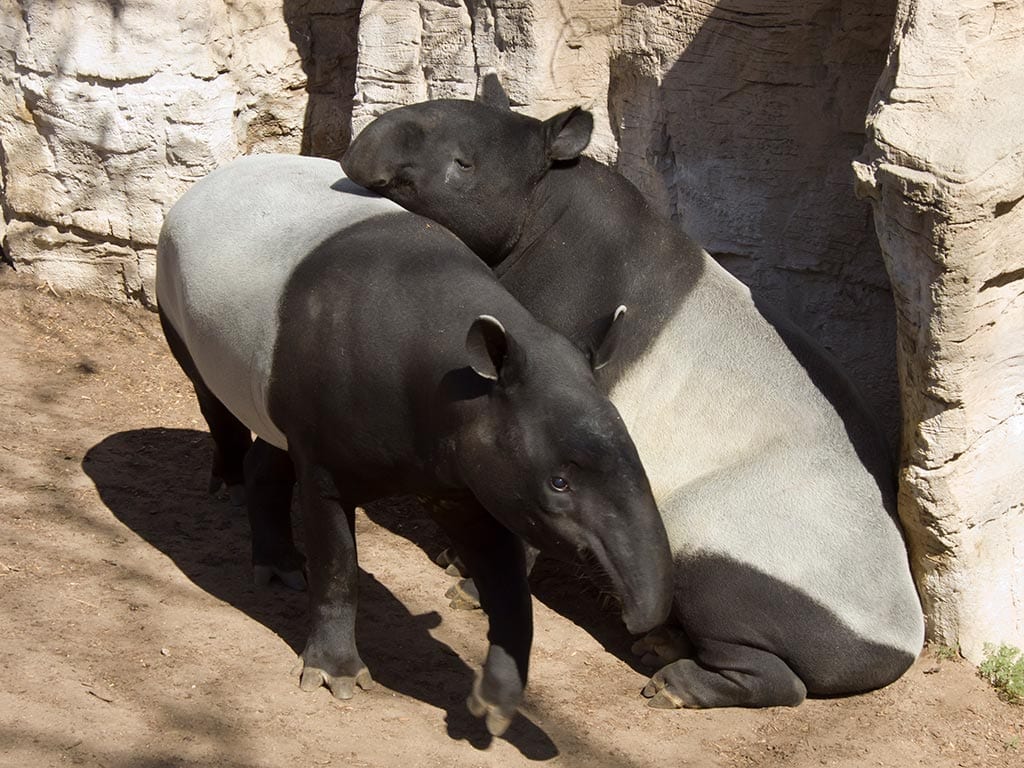
Social Organization
Malayan tapirs are solitary animals except for mating pairs and females with young. When they encounter one another in the wild they act aggressively.
Life Cycle
Tapirs are sexually mature by three years of age, and breeding usually occurs in May and June. After a gestation of 13 months, females seek a secure lair and give birth to a single calf weighing about 15 pounds (6.8 kg). Newborn tapirs are reddish-brown with white spots and stripes for camouflage. Adult coloration develops between four and seven months. Weaning occurs at six to eight months when the babies are nearly full grown, but they stay near their mom until they are about a year old. Females can give birth every two years. Malayan tapirs live up to 30 years.
